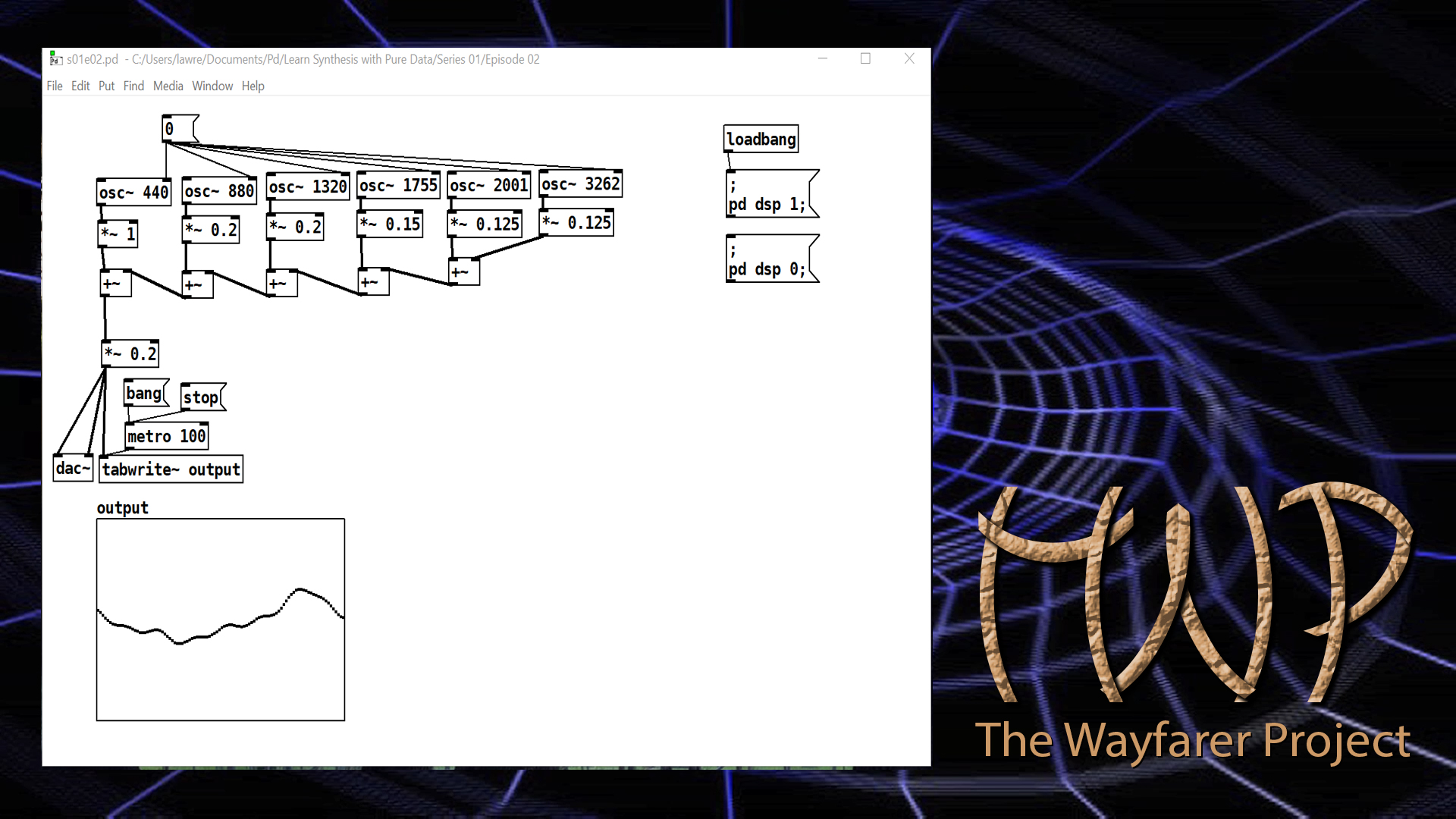Learn Synthesis with Pure Data S01E02 – Overtones, Undertones, Harmonics, and Partials
Overtones, Undertones, Harmonics, and Partials
An essential part of synthesis is learning about overtones, undertones, harmonics, and partials. these are the components of a sound’s frequency material that make up its tone color. Tone color is the unique sound of an instrument or voice and in synthesis, it is at the heart of the creative process. This lesson shows how to use Pure Data to demonstrate the concept of making harmonics and partials to change the tone color of a sound. This lesson also uses Adobe Audition and Spear by Michael Klingbeil to demonstrate the concepts of overtones, harmonics, and partials.
In designing sounds, the frequency spectrum is the overall palette that the composer uses. As a sculptor creates shapes out of stone, wood, and other materials, the sound designer creates sounds from the frequency material within the sound. Understanding how partials and harmonics work within the overall context of overtones and undertones is essential in creating the sound that one envisions. In this episode, one will learn about these color options in the sound palette and learn how to create them. The viewer will also learn about how these aspects of the frequency spectrum shape sound, giving different sounds their own unique tone color. The art of synthesis is built around the mastery of using the harmonics and partials to create core sounds and utilizing tools that shape them to create dynamic sounds over time.
This video is step 2 within the overall series and contains essential fundamentals for anyone whow ants to design their own sounds. understanding the frequency spectrum is to the sound designer like understanding color theory is to the visual artist.
Synthesis Links
Adobe Audition https://adobe.com
Spear Home Page: http://www.klingbeil.com/spear/
See more from Learn Synthesis with Pure Data Series 01
See more from the overall Learn Synthesis with Pure Data Series






